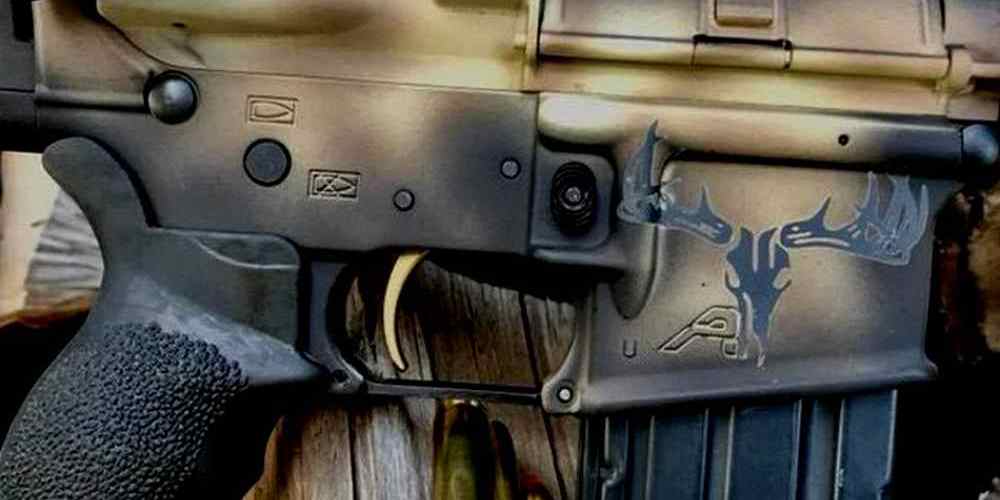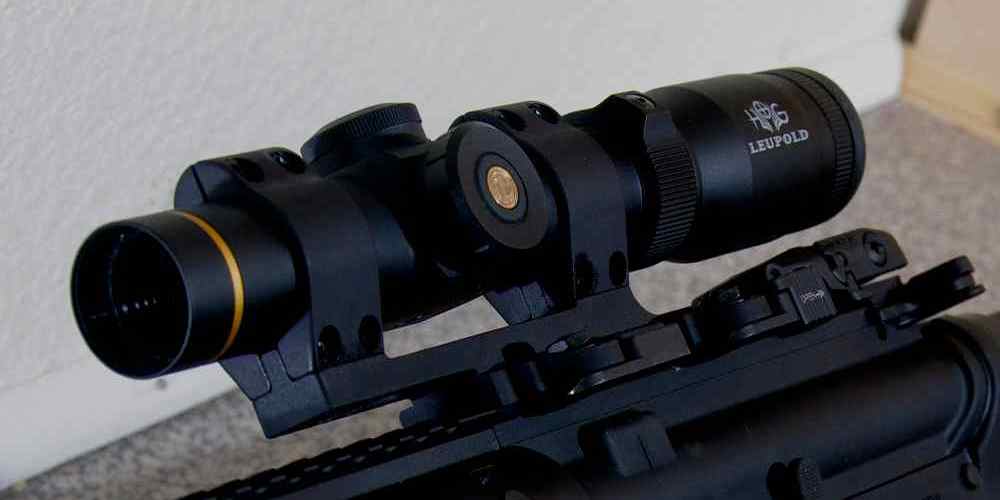“Mastering the gas system for optimal AR-15 performance.”
Rifle-Length Gas System: How It Works and Its Benefits
The AR-15 is a popular rifle platform known for its versatility and customization options. One key component of the AR-15 that can greatly impact its performance is the gas system. Understanding the different gas system lengths available for the AR-15 can help you make an informed decision when building or upgrading your rifle.
The rifle-length gas system is the original design for the AR-15 and is known for its reliability and smooth recoil. In a rifle-length gas system, the gas block is located at the end of the rifle’s barrel, allowing for a longer gas tube. This longer gas tube provides a longer dwell time, allowing for more gas to be directed back into the bolt carrier group to cycle the action.
One of the main benefits of a rifle-length gas system is its softer recoil impulse. The longer dwell time allows for a more gradual build-up of pressure, resulting in less felt recoil when firing the rifle. This can be especially beneficial for shooters who prefer a smoother shooting experience or who are sensitive to recoil.
Another advantage of the rifle-length gas system is its increased reliability. The longer gas tube provides more time for the gas to act on the bolt carrier group, ensuring that the rifle cycles properly even in adverse conditions. This can be particularly important for shooters who rely on their rifle for self-defense or hunting purposes.
In addition to its performance benefits, the rifle-length gas system also allows for a longer sight radius. The longer distance between the front and rear sights can help improve accuracy, especially at longer ranges. This can be advantageous for shooters who require precise shot placement for target shooting or hunting.
Overall, the rifle-length gas system is a solid choice for shooters looking for a reliable and smooth-shooting AR-15. Its longer dwell time, softer recoil impulse, and increased reliability make it a popular option for many shooters.
Whether you are building a new AR-15 or upgrading an existing rifle, understanding the benefits of the rifle-length gas system can help you make an informed decision. Consider your shooting preferences and intended use for the rifle to determine if a rifle-length gas system is the right choice for you. With its proven performance and reliability, the rifle-length gas system is a solid option for shooters looking for a smooth-shooting and accurate AR-15.
Mid-Length Gas System: Pros and Cons Compared to Other Lengths
When it comes to AR-15 gas systems, one of the most popular options is the mid-length gas system. This system falls between the rifle-length and carbine-length gas systems in terms of length, and it offers a balance of benefits that make it a popular choice among shooters. In this article, we will explore the pros and cons of the mid-length gas system compared to the other lengths, so you can make an informed decision when choosing the right gas system for your AR-15.

One of the main advantages of the mid-length gas system is its smoother recoil impulse compared to the carbine-length gas system. The mid-length gas system allows for a longer dwell time, which means that the gas pressure is reduced before the bolt unlocks and cycles. This results in less felt recoil and muzzle rise, making it easier to stay on target for follow-up shots. Additionally, the mid-length gas system can help reduce wear and tear on your rifle, as the softer recoil impulse puts less stress on the internal components.
Another benefit of the mid-length gas system is its improved reliability compared to the carbine-length gas system. The longer gas tube of the mid-length system allows for a more gradual pressure curve, which can help prevent issues such as short stroking or over-gassing. This can be particularly important if you are using a suppressor or shooting in adverse conditions, as the mid-length gas system is less likely to experience malfunctions due to variations in gas pressure.
In terms of accuracy, the mid-length gas system also has an edge over the carbine-length system. The longer dwell time of the mid-length system can help provide a more consistent and stable platform for the bullet to exit the barrel, resulting in improved accuracy at longer ranges. This can be especially beneficial for competitive shooters or hunters who require precision shots on target.
However, there are some drawbacks to consider when choosing a mid-length gas system. One of the main disadvantages is that the mid-length system can be slightly heavier and longer than the carbine-length system, which may not be ideal for shooters looking for a more compact and lightweight rifle. Additionally, the mid-length gas system may require a different buffer weight or spring to optimize performance, which can add to the overall cost of the build.
Overall, the mid-length gas system offers a balance of benefits that make it a popular choice for many shooters. Its smoother recoil impulse, improved reliability, and enhanced accuracy make it a versatile option for a wide range of shooting applications. While there are some drawbacks to consider, such as added weight and potential additional costs, the mid-length gas system can be a worthwhile investment for those looking to optimize the performance of their AR-15. Whether you are a competitive shooter, hunter, or just enjoy hitting the range, the mid-length gas system is definitely worth considering when building or upgrading your AR-15 rifle.
Carbine-Length Gas System: Understanding Its Functionality
When it comes to understanding the functionality of the AR-15 gas system, one of the key components to consider is the length of the gas system. The AR-15 platform offers three main gas system lengths: rifle, mid, and carbine. Each length has its own unique characteristics and functions, which can impact the performance of the rifle in different ways.
The carbine-length gas system is one of the most popular choices among AR-15 enthusiasts, as it offers a good balance between reliability and maneuverability. The carbine-length gas system is typically found on rifles with barrel lengths ranging from 10.5 to 16 inches. This gas system is located closer to the muzzle of the rifle, which allows for faster cycling of the action and reduced recoil.
One of the key advantages of the carbine-length gas system is its ability to handle a wide range of ammunition types and bullet weights. This gas system is known for its versatility, making it a popular choice for shooters who want a rifle that can perform well in a variety of shooting scenarios. Whether you are shooting lightweight varmint rounds or heavy-hitting hunting loads, the carbine-length gas system can handle it all.
Another benefit of the carbine-length gas system is its compact size. Rifles equipped with a carbine-length gas system are typically more maneuverable and easier to handle in tight spaces. This makes them a popular choice for home defense or tactical applications where quick target acquisition and rapid follow-up shots are essential.
In terms of reliability, the carbine-length gas system is known for its consistent cycling and minimal fouling. The shorter gas tube length helps to reduce the amount of gas that is vented back into the action, which can lead to smoother operation and less wear and tear on the rifle over time. This can result in improved longevity and overall performance of the rifle.
While the carbine-length gas system offers many advantages, it is not without its drawbacks. One potential downside of this gas system is increased felt recoil compared to longer gas systems. The shorter gas tube length can result in more abrupt and forceful cycling of the action, which can translate to a sharper recoil impulse for the shooter.
Additionally, the carbine-length gas system may be more sensitive to changes in ammunition or environmental conditions. Shooters may need to experiment with different loads to find the optimal gas setting for their rifle, as variations in pressure and bullet weight can impact the cycling of the action.
Overall, the carbine-length gas system is a versatile and reliable option for AR-15 enthusiasts who value maneuverability and performance. Whether you are looking for a rifle for home defense, hunting, or tactical applications, the carbine-length gas system can provide the functionality you need to get the job done. With its compact size, consistent cycling, and versatility with different ammunition types, the carbine-length gas system is a popular choice among shooters who demand a high level of performance from their AR-15 rifle.
Gas System Tuning: Tips for Optimizing Performance
When it comes to understanding AR-15 gas systems, there are three main lengths to consider: rifle, mid, and carbine. Each length has its own unique characteristics and benefits, so it’s important to understand how they work in order to optimize the performance of your AR-15.
The rifle-length gas system is the longest of the three options, and it is typically found on rifles with longer barrels. This gas system provides a smoother recoil impulse and less felt recoil compared to the other lengths. The longer gas tube allows for more time for the gas to act on the bolt carrier group, which can result in more reliable cycling of the action.
On the other hand, the mid-length gas system is a popular choice for AR-15s with barrel lengths between 14.5 and 16 inches. This gas system strikes a balance between the rifle and carbine lengths, providing a good compromise between reliability and maneuverability. The mid-length gas system is known for its softer recoil impulse and reduced wear on the internal components of the rifle.
Lastly, the carbine-length gas system is the shortest of the three options and is commonly found on AR-15s with barrel lengths of 10.5 to 14.5 inches. This gas system is known for its snappy recoil impulse and increased wear on the internal components of the rifle. However, the carbine-length gas system is also highly maneuverable and well-suited for close-quarters combat situations.
When it comes to optimizing the performance of your AR-15 gas system, there are a few key tips to keep in mind. First and foremost, it’s important to ensure that your gas system is properly tuned for your specific rifle setup. This includes selecting the appropriate gas block and gas tube length for your barrel length and gas system type.
Additionally, it’s important to regularly clean and maintain your gas system to ensure reliable operation. This includes cleaning the gas block, gas tube, and gas key on the bolt carrier group to remove any carbon buildup or fouling that can impede the flow of gas.
Another important factor to consider when tuning your AR-15 gas system is the type of ammunition you are using. Different types of ammunition can produce varying levels of gas pressure, which can affect the cycling of the action. It’s important to test different types of ammunition to find the optimal load for your specific rifle setup.
In conclusion, understanding the differences between rifle, mid, and carbine-length gas systems is essential for optimizing the performance of your AR-15. By selecting the appropriate gas system length, tuning your gas system properly, and maintaining your rifle regularly, you can ensure reliable operation and improved performance in any shooting situation.
Gas System Maintenance: Best Practices for Keeping Your AR-15 Running Smoothly
When it comes to maintaining your AR-15, one of the most important aspects to consider is the gas system. Understanding the different gas system lengths – rifle, mid, and carbine – is crucial for keeping your rifle running smoothly and efficiently. In this article, we will delve into the specifics of each gas system length and provide you with some best practices for maintaining your AR-15 gas system.
The gas system of an AR-15 is responsible for cycling the action of the rifle, allowing it to chamber a new round and eject the spent casing. The length of the gas system refers to the distance between the gas port on the barrel and the gas block. There are three main gas system lengths commonly found in AR-15 rifles: rifle length, mid length, and carbine length.
The rifle length gas system is the longest of the three, with the gas port located near the muzzle of the barrel. This longer gas system allows for a smoother recoil impulse and less felt recoil, making it ideal for precision shooting. The mid length gas system is shorter than the rifle length system but longer than the carbine length system. It strikes a balance between the two, offering a good compromise between recoil management and reliability. The carbine length gas system is the shortest of the three, with the gas port located closer to the chamber. This shorter gas system is popular for its compact size and lighter weight, making it a favorite among tactical shooters.
Regardless of the gas system length of your AR-15, proper maintenance is key to keeping your rifle running smoothly. One of the most important aspects of gas system maintenance is keeping it clean and free of carbon buildup. Carbon buildup can cause malfunctions and reduce the reliability of your rifle. To clean your gas system, you will need to disassemble the rifle and remove the gas tube, gas block, and gas key. Use a solvent and a brush to scrub away any carbon buildup, being sure to pay special attention to the gas port and gas block.
In addition to regular cleaning, it is also important to inspect your gas system for any signs of wear or damage. Check the gas tube for any cracks or bends, as these can cause gas leaks and affect the cycling of your rifle. Inspect the gas block for any signs of corrosion or erosion, as this can also lead to gas leaks. If you notice any issues with your gas system, it is important to address them promptly to prevent further damage to your rifle.
Another important aspect of gas system maintenance is ensuring that your gas system is properly tuned. The gas system of an AR-15 relies on the right amount of gas pressure to cycle the action of the rifle. If the gas system is over-gassed, it can cause excessive recoil and wear on the rifle. If the gas system is under-gassed, it can cause malfunctions and failures to cycle. To tune your gas system, you may need to adjust the gas block or gas key to regulate the amount of gas entering the system.
In conclusion, understanding the different gas system lengths of an AR-15 and following best practices for gas system maintenance are essential for keeping your rifle running smoothly and reliably. By keeping your gas system clean, inspecting it for wear or damage, and tuning it properly, you can ensure that your AR-15 performs at its best every time you take it to the range.




